If you’re stepping into the world of Data Governance — or looking to strengthen your current approach — it can sometimes feel overwhelming. Where do you start? Which roles matter most? What artefacts do you actually need to manage and protect your data?
To help bridge the gap, here’s a simple, practical guide outlining the essentials you’ll want to have in place for a robust and effective Data Governance framework.
The Key Players — and How They Work Together
Data Governance is a team sport — and success depends on the collaboration between different roles, each bringing their own perspective and strengths.
- Data Owners Set the strategic vision for the data. They ensure that each data asset aligns with business objectives and regulatory requirements. ➔ They work closely with Custodians and Stewards to prioritise initiatives, approve access controls, and drive decision-making at an executive level.
- Data Custodians Act as the gatekeepers. They are responsible for the safe handling, storage, and authorised access to data. ➔ They collaborate directly with Owners to enforce policies, and with Stewards to ensure that any changes or movements of data are done securely.
- Data Stewards Focus on data quality, consistency, and integrity at a practical level. They cleanse, validate, and enrich the data based on agreed standards. ➔ They partner with Custodians to implement governance rules, and with SMEs to understand the business meaning and usage of each data element.
- Data SMEs (Subject Matter Experts) Provide the frontline insights. SMEs have hands-on experience with the data and can advise on how it is captured, used, and how its quality impacts business processes. ➔ They support Stewards in defining metadata, quality rules and provide feedback to Owners when changes in business processes require updates to data governance policies.
- Data End Users Analysts, developers, and business users who rely on high-quality data to perform their roles. Their needs drive much of the governance activity. ➔ They give feedback to Stewards and SMEs about data issues or gaps, and work with Custodians to request access or report problems, ensuring continuous improvement.
In a well-functioning Data Governance model, these players form an interconnected ecosystem:
Strategic leadership (Owners) guides operational execution (Custodians, Stewards), informed by practical insights (SMEs), and grounded in real-world use (End Users).
It’s a cycle of collaboration — so do NOT just set-and-forget!
The Essential Artefacts
A strong Data Governance framework relies on a set of key artefacts that formalise processes, protect sensitive information, and maintain quality and trust across the organisation. Here's how each artefact plays out in a real-world within the healthcare sector:
- Data Sharing Agreements - An agreement between a public hospital and a regional Primary Health Network (PHN) outlining how de-identified patient discharge data can be shared to support aftercare coordination and service planning. ➔ These agreements clarify conditions of use, authorised recipients, and security protocols to protect patient confidentiality.
- Data Security Assessment - A security audit assessing how Electronic Medical Records (EMRs) are accessed by clinical staff, ensuring access is role-based, multi-factor authenticated, and logged in line with state health policies. ➔ Protects patient safety and privacy while enabling efficient clinical operations.
- Data Legal Assessment - A review of how patient records are retained and disclosed in accordance with the Victorian Health Records Act 2001 and national My Health Record legislation. ➔ Ensures that the hospital’s data practices comply with applicable legal and ethical obligations.
- Data Privacy Assessment - An assessment confirming that sensitive health service data is collected, stored, and shared with consent processes aligned with the Australian Privacy Principles (APPs). ➔ Helps the hospital meet privacy expectations and regulatory standards, particularly in high-risk domains like mental health and paediatrics.
- Data Asset Register - A centralised register listing hospital source systems such as the Eletronic Medical Record (EMR), Patient Administration System (PAS), Pathology Information System, and Medical Imaging Systems — including details like system owners, custodians, status (active, archived), and key data elements captured. ➔ Enables traceability, accountability, and risk management for critical clinical and operational datasets.
- Data Dictionary - A published dictionary standardising the meanings of terms such as “admission episode”, “bed-day”, “diagnosis code”, and “mental health phase of care” across all reporting and analytics outputs. ➔ Supports consistency across hospital reporting to executives, government funders, and clinical teams.
- Data Request/Report Request Form - An online form within the hospital’s intranet where clinical directors or department managers can request ad hoc reports — for example, a breakdown of Emergency Department presentations by triage category and outcome. ➔ Ensures requests are properly approved by Data Owners and reviewed for privacy and compliance risks before data is extracted.
- Data Lifecycle and Support Management Plan - A documented plan for managing patient health records from point of care entry, through operational reporting, archiving after 7 years (for adults), and eventual secure destruction — aligned with the Public Record Office Victoria (PROV) retention standards. ➔ Protects sensitive health information throughout its entire lifecycle while meeting legal record-keeping obligations.
By setting these foundations early, you’ll ensure that your data is managed, protected, and utilised in a way that drives real value for your organisation — while also meeting stringent compliance requirements along the way.
- Support your strategic goals
- Foster a data-driven culture
- Build lasting trust in your data
Because at the end of the day — Data Governance isn't a sprint. It's a journey.
And with the right roadmap, you can navigate it confidently.
Written by Luke Garton, proofed by AI.
Contact us


















.png)






